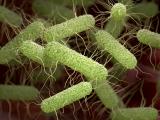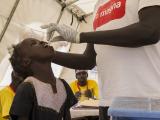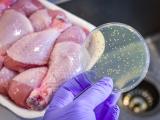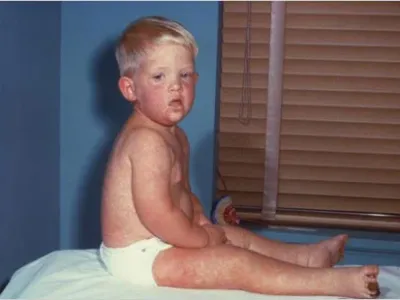Apr 1, 2008 (CIDRAP News) – As expected, the US Department of Agriculture (USDA) last week began publishing the names of broiler chicken plants that have had trouble with Salmonella, listing 21 facilities where more than 10% of samples were found contaminated in recent tests.
Only two plants actually failed to meet the USDA's standard for Salmonella in chicken: a maximum of 20% of samples contaminated. At the other 19 plants, between 10% and 20% of recent samples had Salmonella, according to the USDA Food Safety and Inspection Service (FSIS).
The plants listed are in 12 states and Puerto Rico. The two that failed the standard are a Pilgrim's Pride Corp. facility in Ellijay, Ga., and a Tyson Foods Inc. plant in Center, Tex., according to the FSIS.
The USDA had said in January that it would begin listing facilities with higher Salmonella rates on Mar 28. The move is part of a control initiative the USDA first announced about 2 years ago, after several years of increasing contamination rates. About 16% of broiler chicken samples tested positive for Salmonella in 2005. The initiative includes a "risk-based" sampling program, in which FSIS focuses more of its sampling on plants that have higher Salmonella levels.
The naming of the 21 plants came on the heels of a report in which the consumer group Food and Water Watch listed 27 broiler chicken facilities in 17 states that failed at least one round of Salmonella testing between January 2006 and January 2008 by having a contamination rate higher than 20%. The nonprofit group used a Freedom of Information Act request to obtain the information from the FSIS.
The group called on the USDA to publish Salmonella testing results for all chicken plants and to seek legislation to make its Salmonella standards legally enforceable. The organization also urged the agency not to reduce the frequency of sampling at plants that have the lowest contamination rates.
Three-tier rating system
The FSIS sorts chicken plants into three categories according to their Salmonella test results as compared with the USDA's 20% standard. Facilities that limit Salmonella to half of that standard (10%) or less in the last two sets of samples are put in category 1. Those that have Salmonella in more than 10% but fewer than 20% of samples are in category 2, and those that exceed 20% are in category 3. A set is a series of samples collected at one site on successive operating days—51 days in the case of broiler chickens.
The FSIS's current policy is to name the facilities in categories 2 and 3.
"FSIS intends to post updated results of completed Salmonella verification sample sets for young chicken slaughter establishments on or about the 15th of each month, beginning in April 2008," the agency said in its announcement of the move last week. "Each month's posting will replace that of the previous month."
The agency began naming broiler plants first because they have had the most trouble with Salmonella, but it is considering publishing results for facilities that produce other poultry and meat products, officials said.
Thirteen different poultry companies are represented by the chicken plants named by the FSIS. Pilgrim's Pride has five plants on the list, while Tyson Foods has four.
Five facilities appear on both the FSIS list and the Food and Water Watch list. Four of those are listed by the FSIS as category 2 plants, meaning that between 10% and 20% of recent samples were contaminated. But their appearance on the consumer group list signals they had more than 20% contamination at some point in the last 2 years.
Risk-based sampling
Under the risk-based sampling policy, the frequency of FSIS sampling is based on performance category. Category 1 facilities are tested at least once every 2 years and category 2 facilities at least annually, while category 3 plants may be tested several times a year, USDA officials have said.
The Food and Water Watch report takes issue with that approach, saying that good performance in one round of sampling is no guarantee of continued success. The group's findings show "that passing in one test period does not mean that contamination levels won't increase beyond the performance standard in the next period," the report states.
For example, it says, a Perdue Farms facility in Kentucky failed Salmonella testing in February 2007, with 32 positive samples out of 51 tested, up from 9 of 51 (a passing score) in December 2005.
"Such results undercut the position of FSIS that passing facilities should not be retested for 12 to 24 months," the report adds. "With no government oversight and enforcement, previously good plants may allow themselves to produce unsafe food over extended periods of time, which obviously threatens consumer health and safety."
An FSIS spokesperson declined to comment on the Food and Water Watch report.
See also:
FSIS announcement about publication of chicken plants in performance categories 2 and 3
http://www.fsis.usda.gov/Science/Salmonella_Verification_Testing_Program/index.asp
Food and Water Watch report, titled "More Foul Fowl"
Feb 6 CIDRAP News story "USDA to name poultry plants with Salmonella problems"


















